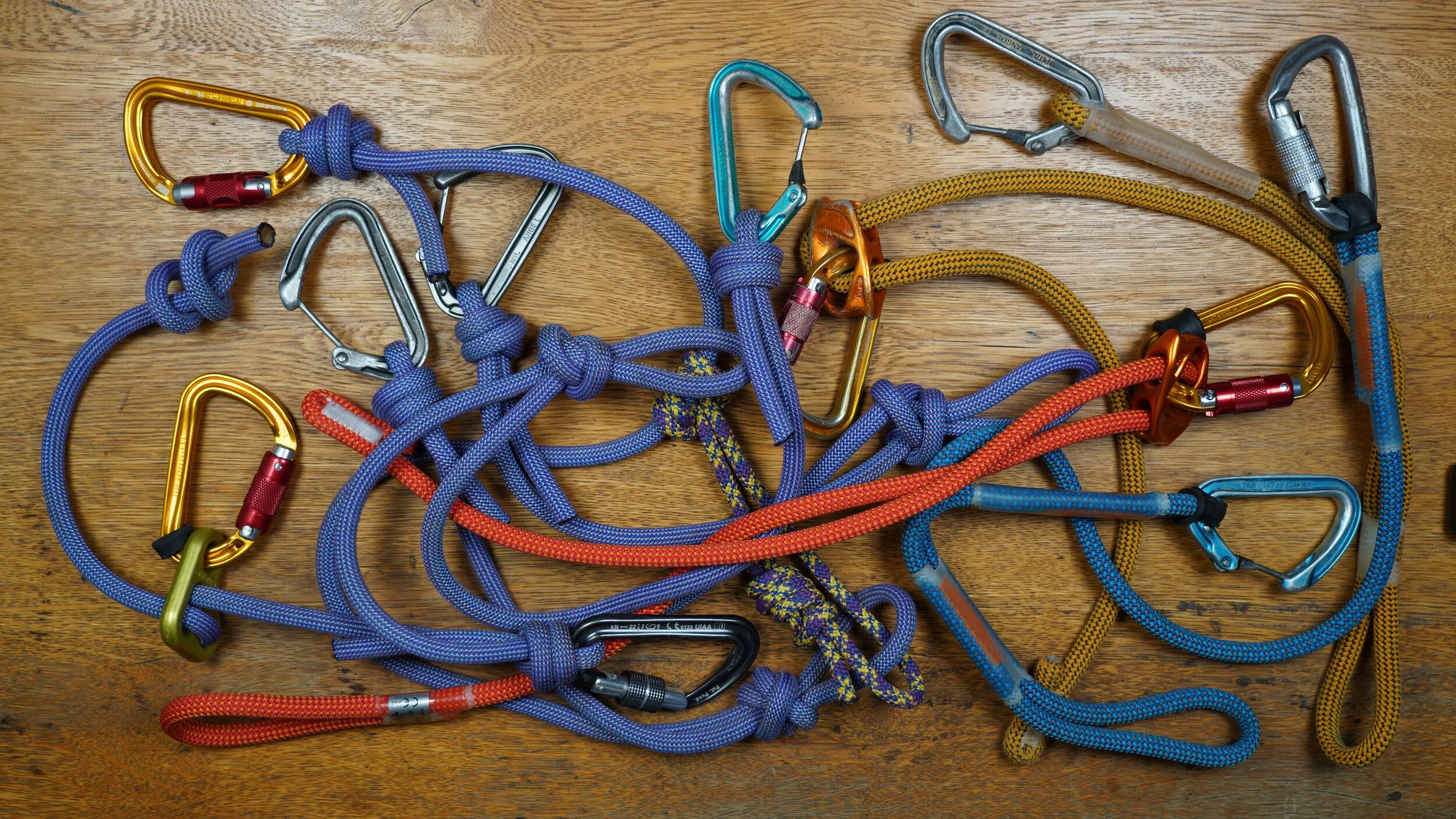Cowstails / lanyards
In vertical caving there is frequently a need for the caver to connect into a traverse line or directly into an anchor. Regardless of the type of ascending system (e.g. Frog, Ropewalker, Mitchell, Texas), a pair of lanyards (also known as cowstails) is standard equipment for making these connections. The cowstails will be connected by a central loop to the master attachment point of the seat harness, and the end of each tail will be equipped with a carabiner. Unlike with via ferrata lanyards, caving cowstails are generally of two different lengths. The short cowstail is usually 30-45 cm (12-18 inches), and the long cowstail is usually 50-75 cm (20-30 inches) in length. The long cowstail is very often also used as a safety tether to the upper ascender. Many cavers tie their own cowstails from kernmantle rope, but there are many commercially made options made from dynamic rope or webbing with sewn loops and terminations, which reduces the weight and bulk of knots.
It’s critically important when using cowstails to keep the attachment point (either the upper ascender, traverse line, or anchor) above the master attachment point of the harness. If this is practiced, then the worst-case scenario in a slip or fall will result in no more than a fall-factor of 1.0 (i.e. length of fall / length of lanyard < 1). Some cavers describe the function of the cowstails as “fall prevention” and NOT “fall protection”. The distinction is that they should be used to support the caver’s weight in situations like roped traverses or crossing rebelays, but they should never be relied upon to absorb the impact forces of a fall, such as in lead climbing. There is so little rope or webbing in most cowstails (typically only 1-2 feet), that there’s very little material available to absorb the impact forces of a fall, even if the cowstail contains knots and is made from dynamic rope. Many commercially available lanyards use sewn loops, and some are even made from static nylon or Dyneema webbing, so there is almost no give or stretch at all. Virtually all manufacturers caution to use their lanyards in a way that limits the fall factor to something less than 1, but it would be even wiser to use them in a way that eliminates any possibility of an impact force being generated.
A very comprehensive series of tests of different cowstails and the impact forces that were generated in different fall-factor conditions was conducted by the National Ski and Mountaineering School of Chamonix, France in 2006. These tests suggest that the safest lanyard option for absorbing impact forces is a cowstail made from single dynamic rope with tied terminations; however, some sewn lanyards are lighter weight, lower profile, and have better abrasion resistance, which can also translate into safety. Again, the best advice is to use cowstails in a way that prevents rather than catches falls.



